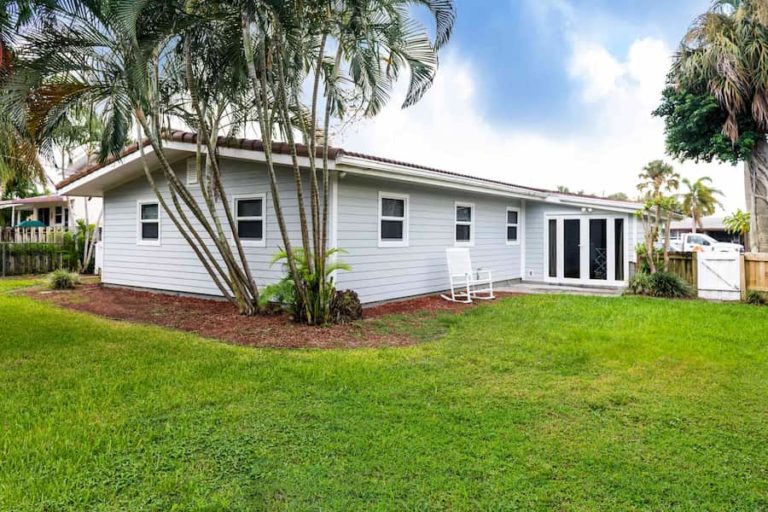Along with the joys of homeownership comes great responsibility. Keeping your most valuable possession looking its best and protecting your family from the elements requires a proactive approach to finding and dealing with any potential problems. Houses clad in James Hardie fiber cement siding professionally installed by Holeman’s trained technicians enjoy decades of virtually maintenance-free life. But vinyl and wood siding often falls victim to weather events, animal intrusion, and substandard workmanship and must be inspected regularly to mitigate issues before they turn into disasters. Even older fiber cement siding cannot last forever and should be inspected each spring and after extreme weather events.
Holeman has created this guide to help South Florida homeowners perform siding inspections and determine when repairs or replacements are called for.

Even though South Florida’s winters are usually mild, there’s usually a night or two each year that dips below freezing. And of course, there’s plenty of rain even during the winter “dry” season. So, spring is an obvious time to check your siding to make sure it will be up to the task of insulating your family from summer’s intense heat and humidity while keeping your home’s framing dry when the real deluges come. Early spring also marks the beginning of hail season. Particularly if you have vinyl siding, you will want to see that it has stood up to the icy projectiles from the past months. Vinyl is especially vulnerable to impact damage. Not only hail but errant tennis shots, careless package carriers, and even overzealous newspaper deliveries can damage the fragile surface. Cracked or split vinyl siding can invite moisture, mildew, termites, and other unwanted guests into your home’s infrastructure.
Likewise, wood siding owners should inspect for peeling paint, which also serves as the first layer of protection. Missing paint exposes the underlying wood panels and shakes to these nuisances.
With both vinyl and wood, pay close attention to the areas most exposed to water. These include spaces under eaves and downspouts, the windward side of the home (this varies by season and location in Florida), locations where vines, tree limbs, or plants may brush against the siding, and around doors, windows, facia, and other areas where the siding was cut or trimmed during installation.
Note that vinyl siding is not water-tight and wood is porous and they often do not exhibit signs of water damage discernible to the naked eye. If an area of wood or fiber-cement siding seems suspect, test it by gently probing it with a flat screwdriver. Do the same with vinyl by gently pulling the panels apart to reach the wood underneath. If the surface seems spongy and gives to light pressure, further action likely will be needed.
Your annual or semi-annual siding inspection also should check out all caulked areas, weep holes, and displaced nails. Cracks or shrinkage in the caulking causes it to pull away open split open on the siding’s joints. This allows moisture in and air-conditioned air out. Latex painter’s caulk usually works best as a replacement filler for wood siding. Silicone caulk’s flexibility and adhesiveness make it the right selection for vinyl siding. Fiber cement siding owners will get the best results with a modified silicone polymer caulk.
Weep holes are drilled into the bottoms of vinyl and brick siding (as well as on the bottoms of brick walls and exterior windows) to allow any water that seeps in to drain back out. Make sure these holes have sufficient ground clearance, are not blocked, and have not become clogged.
Siding should be attached with nails driven flush or snug to the surface. Nailheads that come away from the siding panel could be an indication that the studs beneath have swollen due to water absorption, causing the nails to push out or loosen. Repairs should be made as soon as possible. Nails that appear to have been driven below the siding’s face might mean the siding has swollen and expanded. This is common for most types of siding, and Holeman employees know the right amount of tautness to incorporate during installation to allow for the contraction and expansion that comes with temperature fluctuations. Swelling in vinyl siding, however, may presage a weakening of the material and cracking and splitting down the road.
If your inspection turns up signs of water intrusion, it likely is time to replace your siding with durable, attractive James Hardie fiber cement siding. If you see any of these clues during the inspection, call Holeman right away for an estimate:
- Cracked or Warped panels – Any anomaly that prevents your exterior walls from being completely covered, creates an opening for moisture, mold, bugs, heat, and other undesirable elements. If you can see gaps, the damage is probably irreversible.
- Discoloration – Fading or darkening indicates water damage that will only get worse the longer it is left to fester.
- Obvious Seams – Newer installation methods reduce seams’ visibility. If you notice seams in your siding, it was probably installed decades ago using outdated materials and processes that are not energy efficient.
- Peeling Paint – Peeling paint – whether on the siding panels or an interior wall is a hint that your framing is saturated, a result of failed siding allowing rain to penetrate.
Whether your existing siding is about to give up the ghost or you just want to revitalize your home’s appearance and gain the energy-efficiency fiber cement siding delivers, contact Holeman at 844-910-0324 or fill out our online form for a free estimate.
